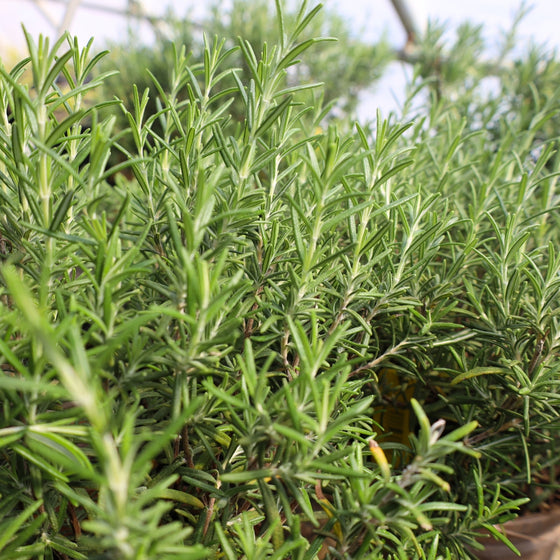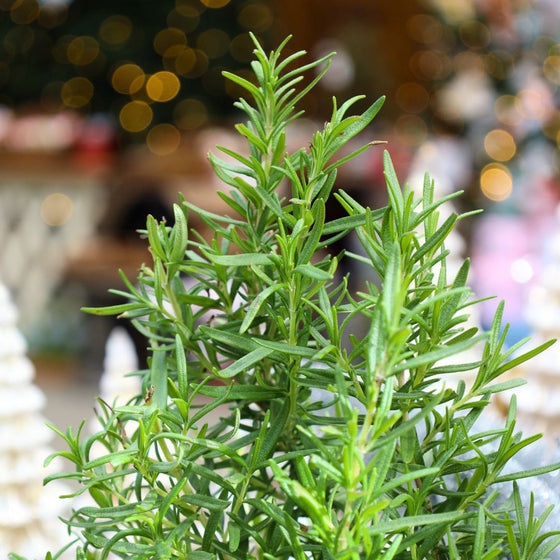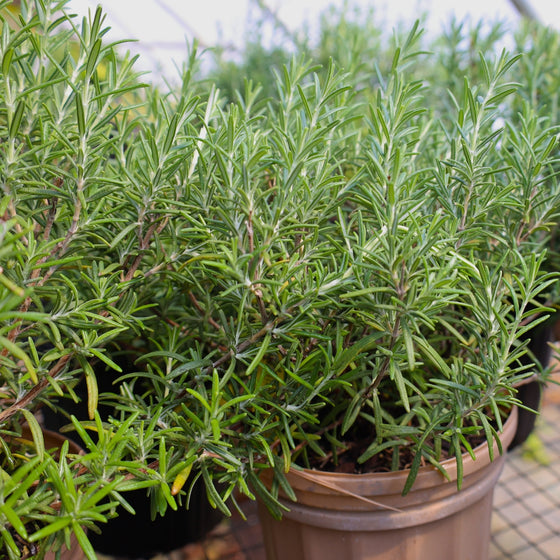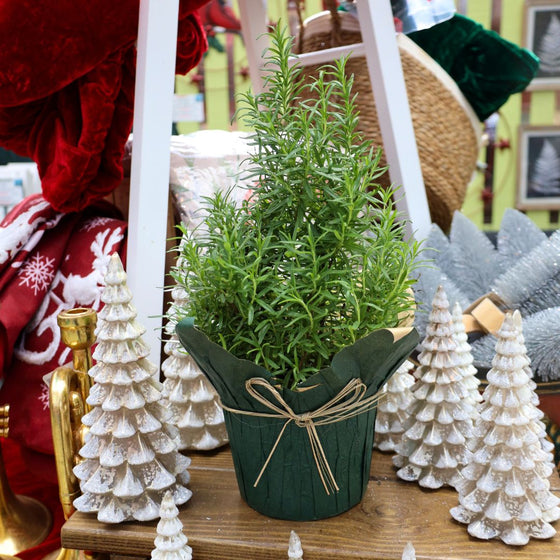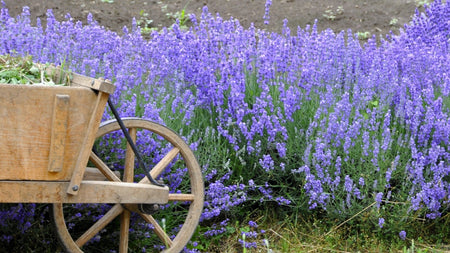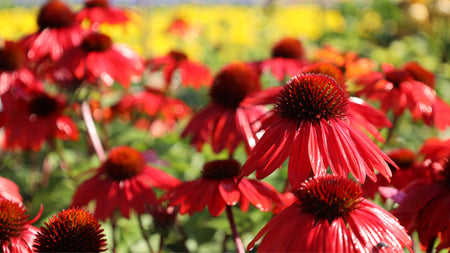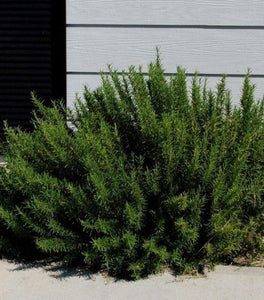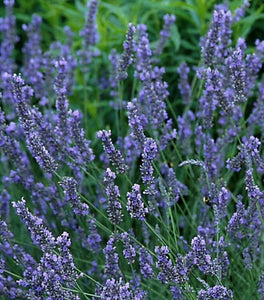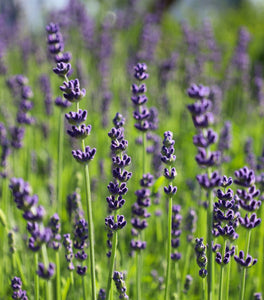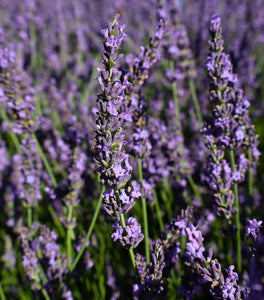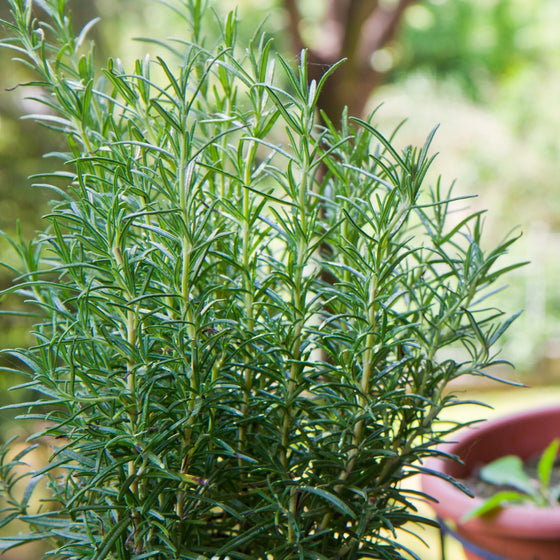
Images Depict Mature Plants
Rosemary Tuscan Blue Plants
Rosemary 'Tuscan Blue' (Rosmarinus officinalis 'Tuscan Blue') is a standout evergreen herb celebrated for its tall, upright growth habit, aromatic needle-like foliage, and stunning deep blue flowers. This vigorous variety of rosemary can reach 4 to 6 feet tall and 2 to 4 feet wide, making it perfect for use as a fragrant hedge, a striking container plant, or a bold accent in herb and Mediterranean-style gardens. The richly scented leaves of Tuscan Blue Rosemary are ideal for culinary use, infusing meats, vegetables, and breads with a savory, earthy flavor that's highly prized by chefs and home cooks alike.
Thriving best in full sun and well-drained soil, Tuscan Blue Rosemary is drought-tolerant once established and thrives in hot, dry climates, making it an excellent choice for xeriscaping and low-water gardens. Its vivid blue flowers bloom profusely from late winter through spring, attracting pollinators like bees and butterflies to the garden. In addition to its culinary and ornamental uses, Tuscan Blue is valued for its deer resistance and its ability to withstand coastal conditions, including salty air and sandy soils, making it a versatile and hardy addition to a wide range of landscapes.
Whether you're creating a fragrant herb garden, lining a sunny pathway, or adding vertical interest to a container planting, Rosemary 'Tuscan Blue' offers exceptional beauty, functionality, and resilience. Its combination of upright form, vibrant flowers, aromatic foliage, and easy care makes it a must-have for gardeners who want a plant that is as practical as it is beautiful. Add Tuscan Blue Rosemary to your garden for year-round greenery, delicious culinary flavors, and a reliable, drought-tolerant performer that enhances any sunny landscape.
How to Care for Rosemary Tuscan Blue
Before you buy a Rosemary 'Tuscan Blue' Plant, make sure to read about the care instructions that are recommended to keep this plant healthy and thriving.
How do I Plant A Rosemary Tuscan Blue Plant?
To plant a Rosemary 'Tuscan Blue' successfully, choose a location that receives full sun for at least six to eight hours a day and has well-drained soil. Rosemary thrives in slightly sandy, alkaline soils and struggles in heavy, waterlogged conditions. Start by digging a hole twice as wide and just as deep as the plant’s root ball to encourage outward root growth. Gently loosen the roots if they are circling the container, place the plant into the hole, and backfill with native soil mixed with a bit of compost to improve soil structure without making it too rich. After planting, water thoroughly to help settle the soil around the roots. Once planted, mulch around your Tuscan Blue Rosemary with a 2–3 inch layer of gravel or coarse mulch, keeping it a few inches away from the base to prevent rot. Mulching helps maintain soil temperature, conserves moisture, and suppresses weeds without causing the soil to retain too much water. Rosemary 'Tuscan Blue' prefers to dry out slightly between waterings, so avoid heavy watering schedules. With proper planting and care, your Tuscan Blue will quickly establish itself, rewarding you with fragrant, evergreen foliage, vibrant blue blooms, and exceptional drought tolerance, making it a standout feature in herb gardens, Mediterranean landscapes, and sunny patio containers.
How do I Water A Rosemary Tuscan Blue Plant?
Watering your Rosemary 'Tuscan Blue' plant correctly is essential for maintaining its health, fragrance, and upright growth habit. During the first growing season, water deeply once or twice a week to help the roots establish firmly in the soil, allowing the soil to dry slightly between waterings. Rosemary prefers dry to moderately moist conditions and can suffer if the roots stay too wet, so it's crucial to avoid overwatering. Using a soaker hose or watering at the base of the plant minimizes moisture on the foliage, helping prevent fungal issues and keeping the plant thriving. Once established, Tuscan Blue Rosemary becomes highly drought-tolerant and will only need occasional watering, particularly during extended dry spells or extreme heat. Always check the soil before watering—if the top 2–3 inches feel dry, it’s time to water thoroughly. Overwatering is a common mistake with rosemary, so allowing the soil to dry between waterings is key to maintaining its strong, woody structure and lush, aromatic foliage. With proper watering habits, your Rosemary 'Tuscan Blue' will remain vibrant and healthy, providing a steady supply of culinary herbs and adding year-round beauty to your garden or patio.
How do I Fertilize A Rosemary Tuscan Blue Plant?
Fertilizing your Rosemary 'Tuscan Blue' plant correctly is important for encouraging healthy, robust growth without compromising its intense fragrance and flavor. In early spring, apply a light dose of a balanced, slow-release fertilizer such as a 10-10-10 or a fertilizer formulated for herbs and Mediterranean plants. Scatter the fertilizer evenly around the base of the plant, keeping it several inches away from the stem, and water thoroughly to help the nutrients absorb into the soil. Avoid heavy fertilization, as overly rich soil can cause rosemary to produce less aromatic oils, weakening the plant's culinary and ornamental value. For continued success, supplementing with organic compost or a mild fish emulsion once or twice during the growing season can provide gentle nourishment without over-stimulating leafy growth. Tuscan Blue Rosemary naturally thrives in lean, well-drained soils, so less is more when it comes to feeding. Over-fertilizing can make the plant leggy and reduce its drought tolerance. With thoughtful, minimal fertilization, your Rosemary 'Tuscan Blue' will maintain its dense, upright form, brilliant blue blooms, and richly scented foliage, ensuring it remains a standout in herb gardens, sunny borders, and patio containers.

How and When should I Prune my Rosemary Tuscan Blue Plant?
Pruning your Rosemary 'Tuscan Blue' plant regularly is essential for maintaining its upright form, encouraging dense growth, and preventing the plant from becoming woody or leggy. The best time to prune is in early spring, just as new growth begins, although light trimming can be done throughout the growing season to shape the plant and harvest fresh sprigs. Start by removing any dead, damaged, or crossing branches using clean, sharp pruning shears. Focus on trimming back the outer stems to encourage bushier, more compact growth without cutting into the old, woody portions of the plant, which do not regrow easily. Lightly pruning your Tuscan Blue Rosemary after it blooms can also help maintain its attractive shape and stimulate additional flowering. Avoid heavy pruning in late fall, as this can encourage tender new growth that might not survive winter cold. Regular, moderate pruning improves air circulation, reduces the risk of disease, and keeps the foliage lush and aromatic. With thoughtful pruning practices, your Rosemary 'Tuscan Blue' will remain healthy, vigorous, and beautifully structured, providing year-round fragrance, culinary use, and vibrant blue blooms to your garden, borders, or container plantings.

